Mutants & Masterminds 3e by tofuwizard
Introduction and Chapter 1
Original SA post Mutants and Masterminds 3e - Introduction and Chapter 1Introduction
Mutants and Masterminds 3e is the latest iteration of a pretend super heroes game published by Green Ronin using a variation of the D20 system. Unlike other D20 games it uses entirely point-buy character generation and doesn't use classes and mostly doesn't use levels (you'll see what I mean later on). One other major difference is that all your fancy polyhedral dice aren't needed; the only die required is a D20. How does that work? we'll find out.
Green Ronin also released the DC Adventures rpg which is the M&M 3e corebook except with DC artwork. In fact, from what I understand, because DC Adventures came out first the M&M corebook actually has some errata included. As mentioned there is an online SRD ( http://www.d20herosrd.com/ ) that does most of my job of explaining how this thing works.
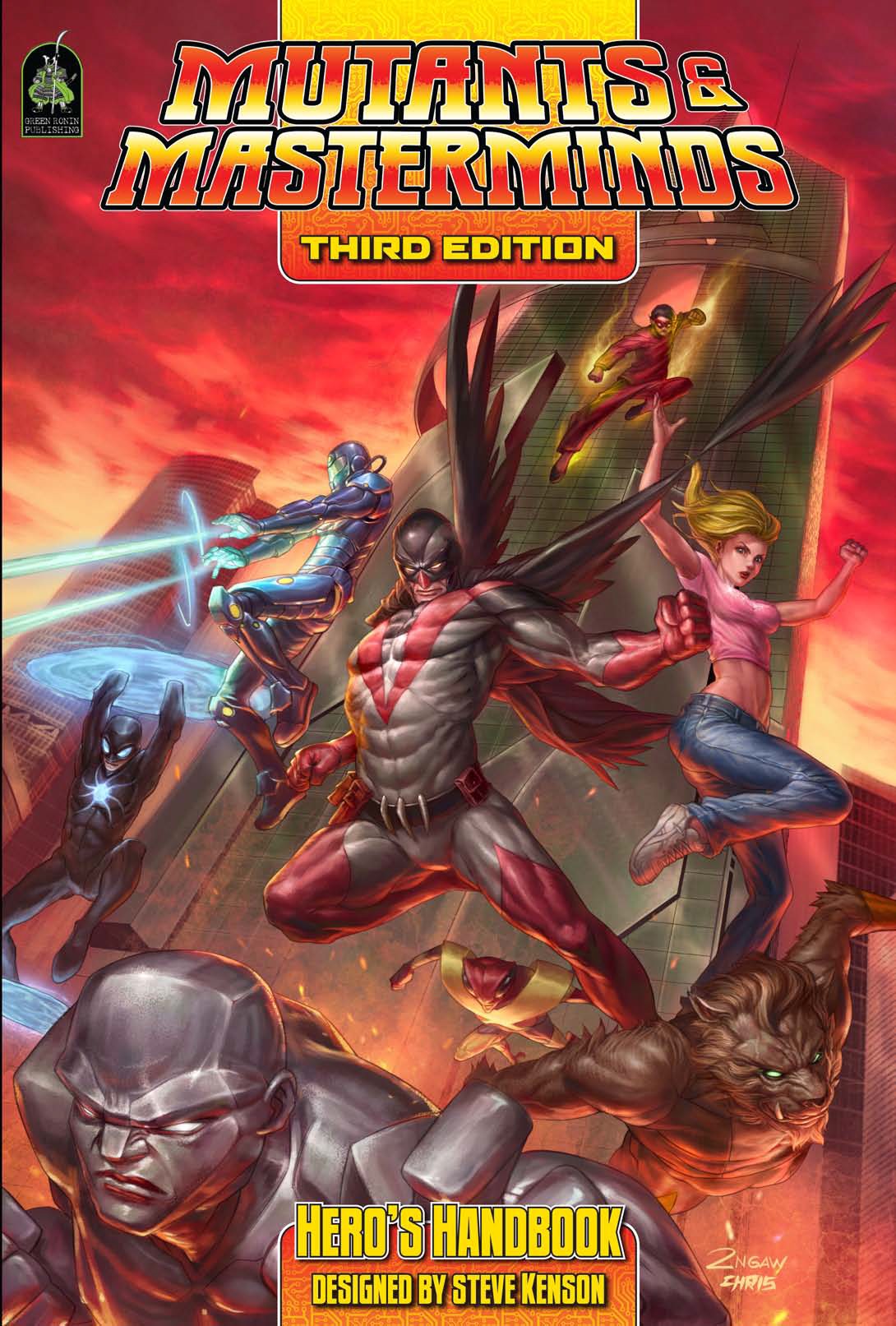
Chapter 1: Basics
Skipping the obligatory 'What is a Roleplaying Game' bit we get into the mechanics.
M&M measures the value of a thing in terms of ranks . This is basically the modifier for a stat or skill or power and roughly used to determine how potent certain powers are. Its also used for measuring weights, distances, times, and volumes, with a convienent chart for all four. These are used for figuring out various things like how much a character can carry, how fast can someone can move in a given timeframe, or how far can a charcter throw a heavy object.
If you've played a D20 game you know how the basic mechanics work, roll a D20, add modifiers, try and equal or beat the DC. However M&M also considers the degree if success, or failure, of your roll. If you match the DC you get 1 degree of success, every 5 points you beat the DC gains you another degree of success. Likewise if you miss the DC you get one degree of failure with additional degrees for every 5 points under. Mostly this is just for fluff but it becomes more important when we get to combat.
Next the book details conditions , which are basically keywords for various penalties that can be imposed on characters by injuries, circumstance, or powers. I don't know why this section is here in the beginning and not in the combat chapter.
Anyways next up is extra effort a mechanic that helps fit into the super hero genre. Basically players can once per turn declare they're using extra effort to gain another standard action, gain a temporary bonus to strength or speed, gain a +2 to any roll, temporarily boost the effect of a power, or outright gain a new temporary super power (provided you can relate it to one of your existing powers). The cost is that your character becomes fatigued with subsequent actions going from fatigued->exhausted->incapacitated. There are ways to mitigate this however.
Hero points are the main way. Hero points are bennies that allow players to provide themselves with mechanical benefits such as activating certain advantages, gain boosted re-rolls, counter powers targeting you or automatically recover from certain conditions (like fatigue). They can also be used to narratively edit the scene such as gaing clues or insights into the villians plan or allowing you to declare there is a salt truck down the road while the party is fighting a giant slug monster in the streets. Its up to the GM to adjudicate these but the book does point out this function exists to allow players more control of the story and boost their chance of success. Hero points are gained through complications which I will be detailing next chapter.
Next time: Character Creation!
Chapter 2
Original SA post Mutants and Masterminds 3e - Chapter 2This chapter lays out the basic framework of how characters are created. As it is a point-buy based system the number of power points (PP) used to purchase stuff needs to be determined. This is also tied somewhat to power level (PL), which acts similarly to levels in other D20 games in that it is supposed to represent the rough level of competency of a character. PL sets the cap for how high a characters attack, damage, power effects, saves and skills can go without circumstancial bonuses. Of course this is a point-buy game so player could gimp their character by not reaching any of those caps, but the system is transparent so doing so would be obvious. The book offers suggestions for what to set the PL to and the amount of PP to offer based on how powerful you want charcters to be. The book defaults to 150 pp and PL 10.
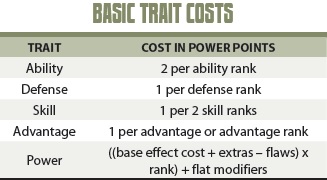
cost of buying stuff
Next basic fluff stuff about your character, how you got your powers, costume, goals, etc. The book also suggests adding a minimum of two complications to your character. Your allowed to take as many as you want provided its not limites by the GM. Complications are pre-set ways the GM, or you, can screw with your character in exchange for giving you hero points. Most complications are more narritive in nature (goals, motivation, wierd origins, relationships) but some have mechanical effects (vulnerabilty to certain substances, or power loss in certain environments/circumstances, etc). This part describes a bunch of different complications, how they can apply to characters and the sort of effects they have or behaviors they encourage.
Next part describes character advancment which is pretty simple. You just get more PP after completing objectives or advancing the story (recommended rate is 1PP per session plus bonuses for doing particulary successfully), and you can spend them just like in character creation. Your PL can also increase, although thats up to the GM. The book recommends increasing it everytime the players have gained 15 power points.
So with that we have a rough outline of how we create a character even though we don't have any idea what abilities, skills, advantages and powers we want to purchase as those are detailed in the next 4 chapters. Fortunately the next part of this chapter provides several fully constructed basic example archetypes, a breakdown of how many PP was spent on different things, and some simple suggestions for customisation for some of the archetypes.
-
Battlesuit
- Fly, shoot things, super strong and tough. - Iron man
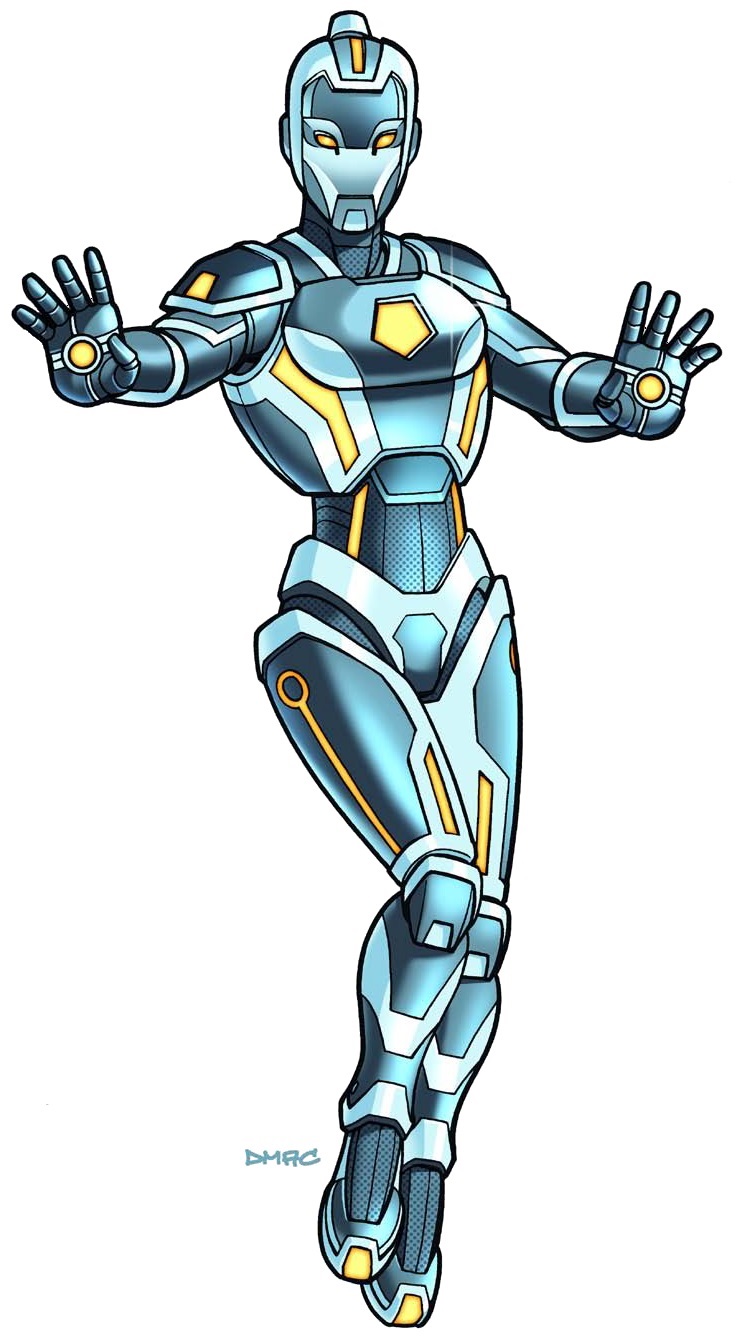
Who designed this?
-
Construct
- Super strong and fairly tough, moderately smart too for some reason. Provides customisation options in the form of different flavors of construct and a few appropriate powers for how to customise (ranged attacks, more toughness, regneration, etc). Can be robot warrior, elmental, undead revenant or a (really strong)ghost. - Solomon Grundy (except smart I guess)
-
Crime Fighter
- The Batman archetype. Lots of skills, and advantages, and plus some ordinary weapons and utility belt things. Not very tough but good at avoiding being hit. Customisation options of more utilty belt gadgets, cool vehicles, or fighting tricks.
-
Energy Controller
- You're the Human Torch. You fly around and shoot things, and have a damage dealing aura. Leaves points available for extra powers and tells you take them but doesn't have any real suggestions :sad:
-
Gadgeteer
- Super smart with a few powerful gadgets and a jet pack. No real suggestions for how to customize. Differs from the Battlesuit in that more points were allocated to intelligence and skills and less to melee capabilities. I Don't really know any examples.
-
Martial Artist
- Not very tough but good at evading like the Crimefighter but more focussed on beating people up and moving around and less on investigating or gadgets. Again no suggestions on customisation. The character doesn't shoot fireballs or leap around like a wuxia movie so I don't really have any examples.
-
Mimic
- Can copy other characters powers by touching them, so very flexible but the copied powers aren't going to be as powerful as the original. Rogue or Parasite except you don't hurt people that you copy and they still retain their powers.
-
Mystic
- Like Energy Controller except you fly slower and get remote viewing. Also like the Energy Controller the archetype leaves some room for extra powers. Not sure who this represents because it doesn't have the option to pull any power out of the hat like Zatanna, Dr. Fate maybe?
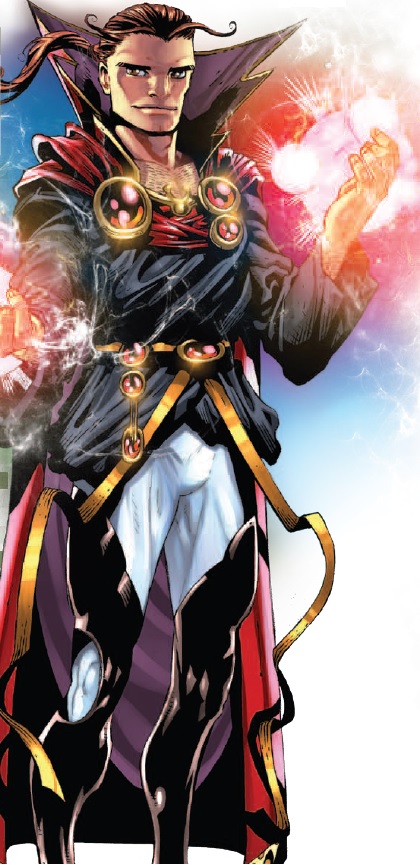

-
Paragon
- Pretty much Superman minus the super senses, and heat vision so, uh, Captain Marvel?
-
Powerhouse
- Super strong, and super tough. Jumps around instead of flying. - Hulk
-
Psychic
- Is psychic like you'd expect. Gets mind reading, telekinesis, basic mind blasts and a choice between moderately strong mind control or illusions. - Jean Grey
-
Shapeshifter
- Beast Boy. Like the Mimic, this archetype has a lot of flexibabilty, especially because you don't need to touch anyone to use your power.
-
Speedster
- The Flash. Super fast. They did include some powers to represent punching someone really rapidly, or running around a room punching everyone in it.
-
Warrior
- Super strong, and fairly agile and tough. Has some customisation of movement powers, choosing between running really fast, swimming really fast, jumping really far, or having super sight and hearing (disappointed the last one wasn't burrowing really fast) - Not sure who this guy is suppose to represent but I'm guessing Aquaman based on the picture
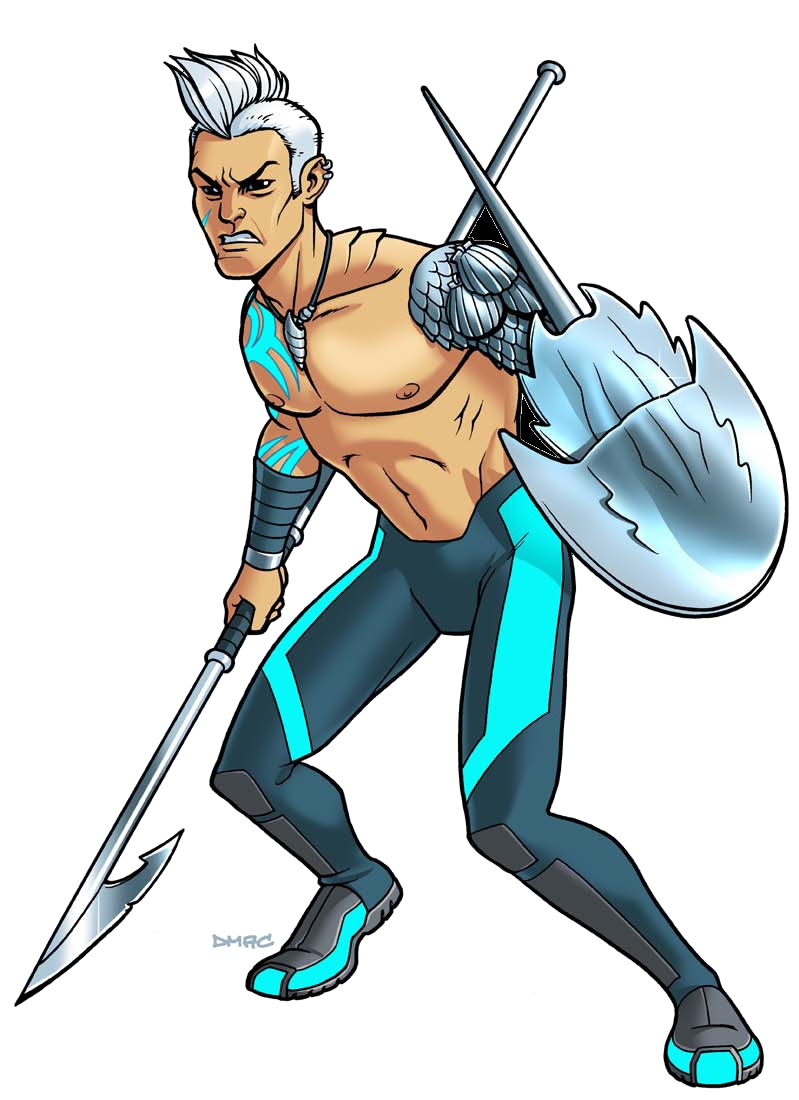
-
Weapon Master
- Like the Martial Artist but not as good at dealing damage, avoiding hits and with fewer fighting options. Can customise with some moderately strong super powers (deflecting bullets, regenerating, jumping far, etc).
Chapter 3
Original SA post Mutants and Masterminds 3e - Chapter 3: AbilitiesAbilities are basically the stats of other D20 games and work pretty much the same, being bundles of skill, combat and misc modifiers. Unlike other D20 game M&M3e has 8 abilities, splitting dexterity into agility and dexterity and adding fighting. Also the base value of an ability is 0 and the game chucks out values going straight for modifiers, so a strength of 1 gives a +1 to all things strength related. Abilities are considered to be debilitated if they drop below -5 for whatever reason and provide more serious penalities, just like if a stat dropped to 0 in other D20 games. You can also have an absent ability, which means you auto-fail any checks requiring that ability and gain some other effects depending on the ability. Usually this can't be taken by player characters because it renders them unplayable (mindless if absent Intellect, Awareness or Presence) or difficult to play (unable to move if absent Strength or Agility)
-
Strength
improves melee damage and carrying allowance
-
Stamina
boosts Fortitude and Toughness saves
-
Agility
boosts ranged Dodge defense, two skills and initiative. This winds up being 2.25 PP worth of bonuses for every 2PP invested.
-
Dexterity
improves ranged attack accuracy and two skills.
-
Fighting
improved melee attack accuracy and melee Parry defense
-
Intellect
this only affects skills, with three set skills and most of the fuzzily defined Expertise skills (which is Craft, Profession and Knowledge from other D20 games all jammed together).
-
Awareness
wisdom renamed, improves Will saves and two important skills (Perception and Insight)
-
Presence
charisma renamed, improves three skills which means it only provides 1.5PP worth of bonuses for every 2PP invested. Its cheaper just to buy the skills individually. Charisma is still a dump stat.
Also defenses, aka how you avoid and/or resist harm.
-
Dodge
- your defense against ranged attacks. Can be used as the equivalent of a Reflex save to avoid attacks.
-
Parry
- your defense against melee attacks. Can also be used as the equivalent of a Reflex save to avoid attacks.
-
Fortitude
- works the same as other D20 games
-
Will
- ditto
-
Toughness
- M&M3e doesn't (quite) use HP to track being hurt so this is used to resist being damaged.
Defenses can be used as static values (defense class) to represent the difficulty of affecting a target with a particular attack, or as resistance checks which are just saving throws against static DCs. The usual static defenses are Dodge and Parry (forming you AC against ranged and melee attacks respectively), and Will. Pretty much all five are used for various restistance checks, Toughness being the most common.
Next time, skills and maybe advantages.